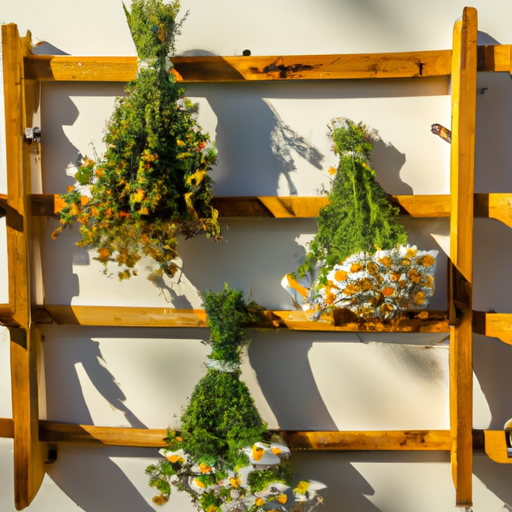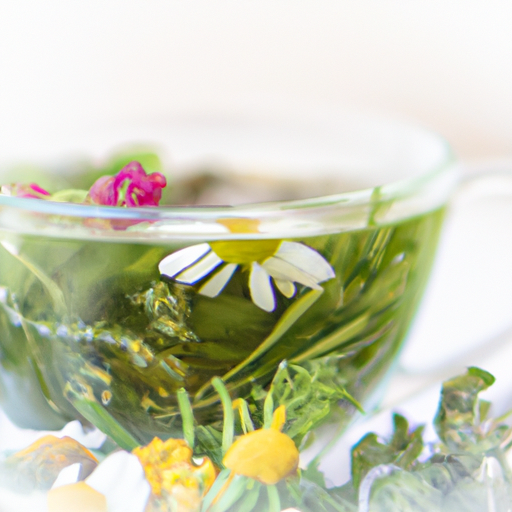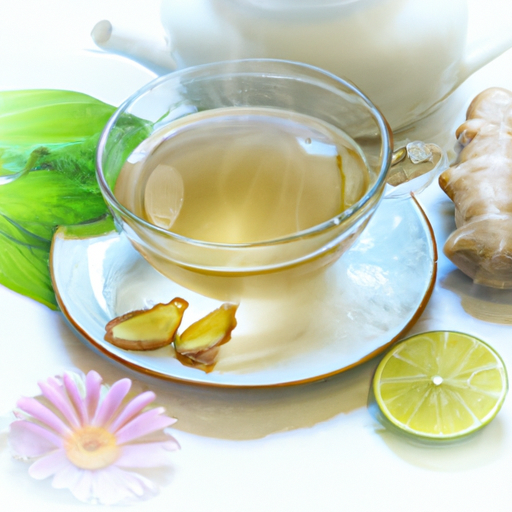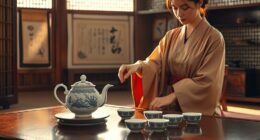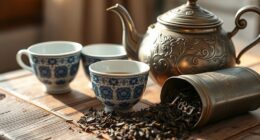I love a good cup of herbal tea, don’t you? There’s just something so soothing about sipping on a warm, fragrant blend, knowing that it’s not only delicious but also packed with health benefits. And what better way to elevate your tea-drinking experience than by drying your own herbal tea leaves?
In this article, I’ll guide you through the process of drying herbal tea leaves, step by step. We’ll start by choosing the right herbs and harvesting them at the optimal time. Then, we’ll dive into the nitty-gritty of cleaning and preparing the herbs for drying. I’ll share with you different drying methods to choose from and show you how to monitor the drying process. Finally, I’ll reveal the secrets to storing the dried tea leaves properly, so you can enjoy your homemade herbal tea for months to come.
So, let’s get started and explore the wonderful world of drying herbal tea leaves!
Key Takeaways
- Harvest herbs on a dry and sunny day, preferably in the morning when essential oils are concentrated.
- Choose a drying method that suits your needs, such as air drying, using a dehydrator, sun drying, or oven drying.
- Monitor temperature and humidity levels during drying to ensure proper drying and prevent mold or loss of flavor.
- Store dried herbs in airtight containers in a cool, dark place away from sunlight and heat to preserve flavor and medicinal properties.
Choose the Right Herbs for Drying
Now, let’s dive into choosing the herbs that’ll give your herbal tea that perfect drying touch.
When it comes to drying herbal tea leaves, it’s crucial to select the best herbs that not only provide a delightful flavor but also offer incredible health benefits.
Some of the best herbs for drying include chamomile, peppermint, lavender, and rosemary.
Chamomile is known for its calming properties and can help soothe anxiety and promote better sleep.
Peppermint, on the other hand, aids digestion and can provide relief from stomach discomfort.
Lavender has a beautiful aroma and is often used to reduce stress and promote relaxation.
Lastly, rosemary is rich in antioxidants and can support brain health.
By choosing these herbs, you’ll not only enhance the flavor of your herbal tea but also enjoy the numerous health benefits they offer.
Harvest the Herbs at the Right Time
Harvest the herbs when they’re at their peak to ensure the best flavor and potency. Timing of harvest is crucial for drying herbal tea leaves. Here are some key points to consider when harvesting your herbs:
-
Choose a dry and sunny day to harvest your herbs. This helps to reduce moisture content and prevent mold growth during the drying process.
-
Harvest in the morning, when the essential oils in the herbs are at their highest concentration.
-
Use sharp scissors or pruning shears to cut the herbs, making clean cuts just above a leaf node.
-
Only harvest healthy and mature plants, avoiding any damaged or diseased parts.
After harvesting, it’s important to dry the herbs properly to maintain their potency. Hang the herbs upside down in a well-ventilated area away from direct sunlight. This allows air circulation and helps to prevent the growth of bacteria.
Once the herbs are completely dry, store them in airtight containers to preserve their flavor and medicinal properties.
Clean and Prepare the Herbs
Ensure that you cleanse and ready your herbs by gently rinsing them under cool water and patting them dry with a clean towel. This step is crucial to remove any dirt, insects, or other impurities that may have accumulated on the leaves.
Once the herbs are clean, it’s time to prepare them for drying. One effective technique is to bundle small bunches of herbs together and secure them with a string or rubber band. This allows for better air circulation and prevents the leaves from sticking together during the drying process.
Another method is to lay the herbs out in a single layer on a clean, dry surface, such as a baking sheet or wire rack. This allows for even drying and prevents mold or mildew from forming.
Whichever technique you choose, make sure to place the herbs in a well-ventilated area away from direct sunlight. This will ensure a slow and gentle drying process, which is essential for preserving the flavor and aroma of the herbs.
Choose a Drying Method
To preserve the full flavor and aroma of your herbs, you’ll want to choose a drying method that allows for optimal air circulation and prevents moisture buildup. There are several methods to choose from, each with its own benefits and drawbacks. Air drying and using a dehydrator are two common methods, each with its own advantages. Air drying allows for a slower, more natural drying process that can enhance the flavor and aroma of the herbs. However, it can take longer and is more dependent on environmental conditions. On the other hand, using a dehydrator provides a quicker and more controlled drying process, but it may not yield the same depth of flavor. When it comes to sun drying versus oven drying, sun drying is a traditional method that harnesses the natural heat and airflow of the sun. It can be a cost-effective option, but it is highly dependent on weather conditions and can take longer. Oven drying, on the other hand, offers more control over temperature and airflow, resulting in a quicker drying process. However, it may require more energy and can be less suitable for delicate herbs.
| Pros of Air Drying | Cons of Air Drying |
|---|---|
| Enhances flavor and aroma | Longer drying time |
| Natural and traditional method | Dependent on environmental conditions |
| Pros of Using a Dehydrator | Cons of Using a Dehydrator |
|---|---|
| Quicker drying process | May not yield same flavor |
| More controlled environment | Requires a dehydrator machine |
| Pros of Sun Drying | Cons of Sun Drying |
|---|---|
| Cost-effective | Highly dependent on weather |
| Natural heat and airflow | Can take longer |
| Pros of Oven Drying | Cons of Oven Drying |
|---|---|
| Quicker drying process | Requires more energy |
| More control over temperature and airflow | Less suitable for delicate herbs |
Monitor the Drying Process
As you proceed with the drying process, it’s crucial to closely monitor the herbs to ensure that they’re reaching the desired level of dryness. Monitoring the temperature and humidity levels is essential for achieving optimal results.
Maintaining a consistent temperature is important to prevent the herbs from overheating or becoming too dry too quickly. Ideally, the temperature should be around 95°F (35°C) for most herbs. However, some delicate herbs may require a lower temperature.
Additionally, monitoring humidity levels is equally vital. If the humidity is too high, the herbs may not dry properly and could develop mold. On the other hand, if the humidity is too low, the herbs may dry too quickly and lose their flavor.
By carefully monitoring these factors, you can ensure that your herbal tea leaves are dried to perfection.
Store the Dried Tea Leaves Properly
Properly storing the dried tea leaves will help preserve their delicate flavors and aromas for a longer period of time, allowing you to enjoy a cup of pure bliss whenever you desire.
When it comes to storing dried tea leaves, it’s important to follow proper storage techniques to prevent moisture damage. Firstly, make sure to store the dried tea leaves in airtight containers, such as glass jars or metal tins, to keep out moisture and air.
Additionally, store the containers in a cool, dark place, away from direct sunlight and heat sources, as exposure to light and heat can degrade the quality of the tea leaves.
Lastly, avoid storing the tea leaves near strong-smelling items, as they can absorb odors easily.
By following these storage guidelines, you can ensure that your dried tea leaves stay fresh and flavorful for a longer period of time.
Enjoy Your Homemade Herbal Tea
After properly storing the dried tea leaves, it’s time to indulge in the delightful experience of enjoying your homemade herbal tea. There’s something truly satisfying about sipping on a warm cup of tea that you’ve made yourself.
Not only does it taste delicious, but it also offers numerous health benefits. Homemade herbal tea is packed with antioxidants and can help boost your immune system, improve digestion, and promote relaxation.
To brew the perfect cup, start by boiling fresh water and pouring it over your tea leaves. Let it steep for about 5-7 minutes to extract all the flavors and beneficial compounds. Experiment with different brewing times and temperatures to find your preferred taste.
Remember to savor each sip and appreciate the effort you’ve put into creating this nourishing beverage.
Experiment with Blends and Flavors
Try blending different herbs and spices to create unique and flavorful combinations that’ll tantalize your taste buds. Did you know there are over 3,000 different types of herbs and spices that can be used to make tea blends? When it comes to experimenting with different combinations, the possibilities are endless.
You can mix herbs like chamomile and lavender for a soothing blend that promotes relaxation, or combine peppermint and lemon balm for a refreshing and invigorating flavor. If you’re feeling adventurous, try adding spices like cinnamon, ginger, or cardamom to your herbal tea blends for a warm and aromatic twist.
Don’t be afraid to explore unique tea flavors by combining different herbs and spices – the results may surprise and delight your taste buds.
Frequently Asked Questions
Can I use any type of herb for making herbal tea?
Yes, you can use a variety of herbs to make herbal tea. Different types of herbs offer unique benefits when used in tea. For example, chamomile promotes relaxation, while peppermint aids digestion. Experiment with different herbs to find your favorite blend.
How can I tell if my herbs are ready to be harvested?
How can you tell if your herbs are ready to be harvested? By observing their appearance, aroma, and taste. Proper harvesting techniques include picking leaves in the morning, when they are at their freshest, and using sharp scissors to avoid damaging the plant.
Do I need to wash the herbs before drying them?
Yes, it is recommended to wash the herbs before drying them. Washing removes dirt, insects, and any residual chemicals. It also helps preserve the natural flavors and aromas, ensuring a high-quality herbal tea.
What are some alternative drying methods for herbal tea leaves?
Some alternative drying methods for herbal tea leaves include air drying and using a dehydrator. Air drying allows for natural evaporation and preservation of essential oils, while a dehydrator offers a faster and more controlled drying process.
How long does it take for the tea leaves to dry completely?
It took me two weeks to dry the tea leaves completely. To speed up the process, I increased the temperature to 90 degrees Fahrenheit, which is the best temperature for drying herbal tea leaves.
Conclusion
In conclusion, drying herbal tea leaves can be a delightful and rewarding process. By following the right steps, you can ensure the preservation of the herbs’ flavors and aromas.
Remember to choose your herbs wisely, harvest them at the perfect time, and clean and prepare them properly.
Select a suitable drying method, monitor the process diligently, and store the dried leaves correctly.
Finally, savor the satisfaction of enjoying your very own homemade herbal tea, and don’t hesitate to experiment with unique blends and flavors. Happy drying and brewing!

